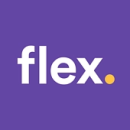Customer success managers are forward-thinkers by nature, as evidenced by Chelsea Bennett and her team at Flex, a company that enables users to pay their rent in multiple installments throughout the month. Bennett and her team have developed a process to ensure that users have all their payments in before the first of the month, which is built on proactive communication.
“We provide text message reminders and alerts, send email requests, and update their app with any current issues and instructions on how to resolve them,” Bennett told Built In.
Proactive communication isn’t just a mindset customer success organizations can adopt. That’s because it’s about much more than just “getting out in front” of problems. It requires teams to think critically about the issues that could cause problems for their clients and the data and tools needed to stay ahead of them. Proactive communication also entails finding ways to prevent problems from popping up, through thorough and hands-on customer onboarding, for example.
If this all sounds like a bit much, don’t worry. We spoke with two additional New York customer success experts who shared the strategies that have helped them be more proactive with client communication.
Flex’s app is designed to make it easier for users to pay their rent, which means the busiest day of the month will be for its customer success team is no surprise. Chelsea Bennett, a member of the Flex customer success team, said her team has devised a variety of strategies to ensure that both they and the users they work with stay ahead of issues come “day zero.”
What’s one habit you’ve adopted that’s helped you be more proactive in your communications with clients?
As cliché as it sounds, putting yourself in their shoes goes a long way. If I find I’m not able to relate on their level, my second tactic is to pretend like I’m speaking to my mother! She’s a great lady but sometimes requires a little extra patience.
Dealing with budgeting and finances can be stressful for most people, so it’s important to ensure a sense of empathy and ownership in communications with Flex users. We’re here to help change the way people live each month, to help improve their lives. In providing them with a firm understanding of the Flex process, and being sensitive to their personal circumstances, the user is able to understand their role and responsibilities in utilizing our services. This is key to their success and ours. It also provides them the reassurance that we’re here for them in case things don’t go as planned.
If I find I’m not able to relate on their level, I to pretend like I’m speaking to my mother.”
What role does data play in helping you and your team provide more proactive communications to customers?
We rely heavily on understanding how the Flex app and our product are currently performing for our customers. Any hiccups or slight changes to the app are reported soon after they’re encountered by users, and the Flex team has to act fast to ensure we understand the cause and can explain or rectify it. The data pulled on each side of the business combines to pinpoint the issue.
We want our customer base to know that we are a company that is safe, effective and can be relied upon for one of the largest expenses they have. Our teams seamlessly work together to exchange data, analyze it and roll out a resolution. Because of the way we collect and utilize data, we’re able to be the voice of the customer and have our finger on the pulse of the business at the same time.
As a team, what’s a system or strategy you’ve put in place to get ahead of potential issues before they arise?
Bill payment week is pretty hectic around these parts, and we’re always trying to get ahead of the game however we can. We are relentless in our customer communications come “day zero,” or the day before the first of the month.
We provide text message reminders and alerts, send email requests, and update their app with any current issues and instructions on how to resolve them, which provides a sense of ownership and makes the user part of the process. We want them to know they have a responsibility in understanding and upholding the program requirements. This strategy is supported by all the teams we work directly with, including collections, product support and tech ops. We are one big dream team come bill pay!
It can be hard for CSMs to proactively communicate with customers if they don’t have the tools to spot problems before they happen. That’s where the importance of proactive communication within companies comes into play. Max Stern, director of account management at Code3, said his team worked with the data and engineering teams to develop a campaign tracking tool that enables them to spot problems — and successes — in real time.
What’s one habit you’ve adopted that’s helped you be more proactive in your communications with clients?
My team manages paid media for more than 30 brands within one of our largest clients, and the volume of email is incredible. Having a good email management process is super important to keep things on track, and I have every single email tagged by brand. I can easily organize my information and flag things that will automatically serve as a reminder that I have an action item, which helps me from a prioritization standpoint. I have things I know I have to complete an action on at the top of the inbox, whether that’s responding to a client request or making sure that documents are updated when we have scheduled meetings with clients. This helps both me and my team stay organized.
People feel comfortable asking for help when they need it, which helps us stay ahead of issues or potential mistakes.”
What role does data play in helping you and your team provide more proactive communications to customers?
With every single campaign, it’s important for us to look at the data in real time. Because we can run many campaigns at a time, we can tell clients which elements of the campaign are doing well and why. Maybe the success is due to the creative or the specific audience, like it’s performing well with a certain age range. It’s super important once the campaign launches to be looking at the data as often as possible.
That’s a big part of what helps differentiate us: We never set it and forget it but look in real time at what is working and what we can do to help the campaign perform better. A critical part of our work is capturing and interpreting this historical data to drive our future recommendations. It’s an ongoing cycle with data and campaigns informing one another.
As a team, what’s a system or strategy you’ve put in place to get ahead of potential issues before they arise?
We have hundreds of campaigns that can be live at any given time. By necessity, we have to have a really good campaign tracking tool. Ours shows how much we should spend on the campaign, how much we are spending, how many days are left in the campaign, etc. It gives a high-level view for us to see if everything is going as planned in a specific campaign without having to wait for it to finish and we can intervene in the moment when needed.
We were able to build and use this tool through regular and ongoing collaboration with our data and engineering teams. As a team, we also do a good job empowering people to understand what is going on in other brands within the client, even those with whom they don’t directly interact. We have a lot of really good conversations on the team, and people feel comfortable asking for help when they need it, which helps us stay ahead of issues or potential mistakes.
Many people learn by doing, which means customer success teams will invariably receive questions and complaints after their first onboarding call with a new client. To mitigate this, Brett Wrenn, North America head of customer success at Carbyne, lets users take “test drives” during his onsite demos.
What’s one habit you’ve adopted that’s helped you be more proactive in your communications with clients?
Whenever we sign a new account up, I go out of my way to stay in the know about what’s going on in their region. I subscribe to local news outlets based in the cities of the accounts that I manage as Carbyne operates in public safety and the agencies we work with are often featured or interviewed in the news. I also follow my customer contacts and the agencies themselves on social media and set up Google Alerts to keep up to date with everything that I might not otherwise hear about. Following a customer on LinkedIn or Facebook gives me more insights into who they are, what they like and what they care about.
These insights help me connect with our customers on a real level and show genuine interest in what they do. Knowing more about my customers and their business also lets me start conversations and get to know them on a personal level. When I know more about the big emergency calls they’ve handled from the news, I can reach out to see if they used features that could have helped them.
We monitor usage spikes and drops that may indicate a possible technology challenge, failure or true adoption of our platform.”
What role does data play in helping you and your team provide more proactive communications to customers?
We monitor usage spikes and drops that may indicate a possible technology challenge, failure or true adoption of our platform. We also use data to identify features that aren’t being used as much from one agency to another, which can help start a conversation about training or the features they really need.
When we know which features are being used less we are able to reach out to ensure appropriate training was provided or relay enhancements to the feature back to our product team. We also lean into the features that our customers are using frequently and often go to them for feedback on how we can improve.
As a team, what’s a system or strategy you’ve put in place to get ahead of potential issues before they arise?
During the selling, implementation and onboarding phases the sales, customer success and support teams keep our eyes and ears open for any indication of technology struggles, hesitations or concerns that the end users may have. This helps us get ahead of issues and address them directly, or at the very least plan ahead and schedule additional training sessions.
As a previous 911 call taker, I know that many of us are hands-on learners, so I like to let users “drive” when doing an onsite demonstration and allow them to really feel the platform and manipulate the interface. It’s a great way to create excitement, like test driving a new car, and help users get comfortable with their new platform to avoid adoption issues.










